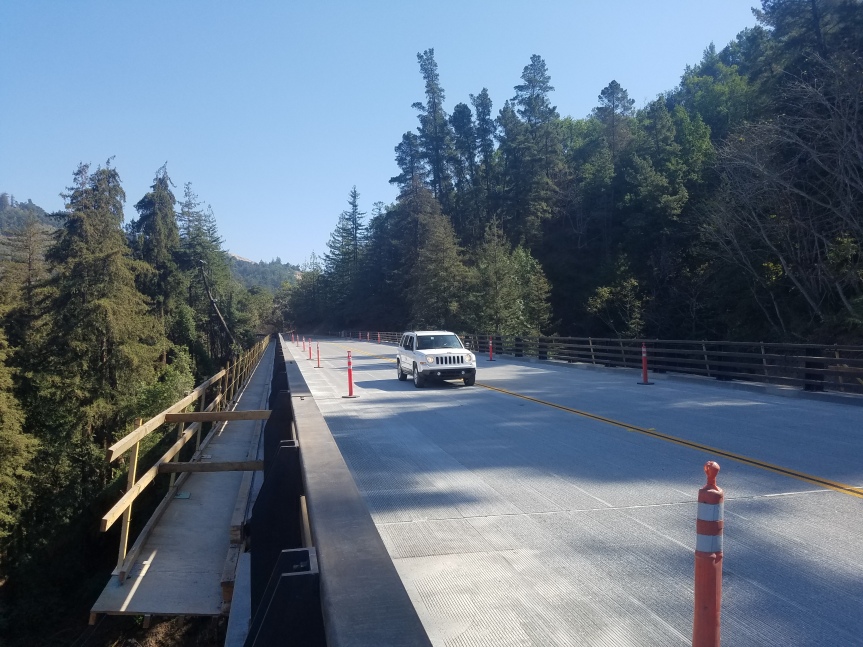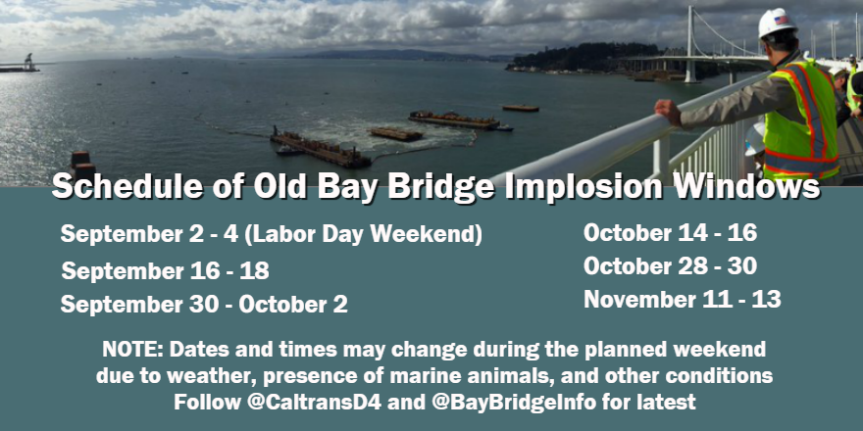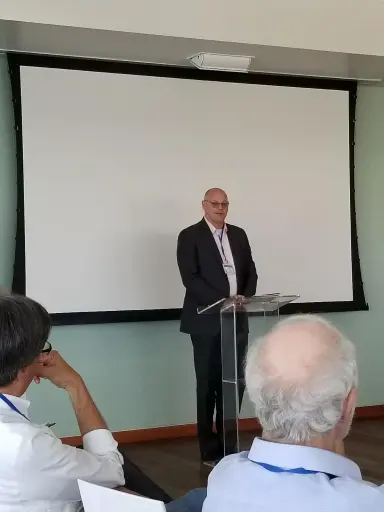
Sign up for the Rebuilding CA Newsletter
Stay updated on all things SB 1: construction updates, new program awards, updates to our project tracking map, and the latest news. Sign up here: https://calsta.ca.gov/rebuilding-ca-newsletter/

Stay updated on all things SB 1: construction updates, new program awards, updates to our project tracking map, and the latest news. Sign up here: https://calsta.ca.gov/rebuilding-ca-newsletter/
Governor Brown, in his sixteenth State of the State address, highlighted transportation infrastructure as a critical investment in California’s economy:
Our economy, the sixth largest in the world, depends on mobility, which only a modern and efficient transportation system provides. The vote on the gas tax was not easy but it was essential, given the vast network of roads and bridges on which California depends and the estimated $67 billion in deferred maintenance on our infrastructure. Tens of millions of cars and trucks travel over 330 billion miles a year.
The funds that SB 1 makes available are absolutely necessary if we are going to maintain our roads and transit systems in good repair. Twenty-five other states have raised gas taxes. Even the U.S. Chamber of Commerce has called for a federal gas tax because the highway trust fund is nearly broke.
Government does what individuals can’t do, like build roads and bridges and support local bus and light rail systems. This is our common endeavor by which we pool our resources through the public sector and improve all of our lives. Fighting a gas tax may appear to be good politics, but it isn’t. I will do everything in my power to defeat any repeal effort that may make it to the ballot.
Since I have talked about tunnels and transportation, I will bring up one more item of infrastructure: high-speed rail. I make no bones about it. I like trains and I like high-speed trains even better. So did the voters in 2008 when they approved the bond. Look, 11 other countries have high-speed trains. They are now taken for granted all over Europe, in Japan and in China. President Reagan himself said in Japan on November 11, 1983: “The State of California is planning to build a rapid speed train that is adapted from your highly successful bullet train.” Yes, we were, and now we are actually building it.
Like any big project, there are obstacles. There were for the Bay Area Rapid Transit System, for the Golden Gate Bridge and for the Panama Canal. But build it they did and build it we will — America’s first high-speed rail system. One link between San Jose and San Francisco — an electrified Caltrain — is financed and ready to go. Another billion, with matching funds, will be invested in Los Angeles to improve Union Station as a major transportation hub and fix the Anaheim corridor.
The next step is completing the Valley segment and getting an operating system connected to San Jose. Yes, it costs lots of money but it is still cheaper and more convenient than expanding airports and building new freeways to meet the growing demand. It will be fast, quiet and powered by renewable electricity and last for a hundred years.
Already, more than 1,500 construction workers are on the job at 17 sites and hundreds of California businesses are providing services, generating thousands of job years of employment. As the global economy puts more Americans out of work and lowers wages, infrastructure projects like this will be a key source of well-paid California jobs.
Difficulties challenge us but they can’t discourage or stop us. Whether it’s roads or trains or dams or renewable energy installations or zero-emission cars, California is setting the pace for America. Yes, there are critics, there are lawsuits and there are countless obstacles. But California was built on dreams and perseverance and the bolder path is still our way forward.
For more information on our work to improve state highways and roads in your community, visit RebuildingCA.ca.gov.
For information on construction activity on the nation’s first high-speed rail line, visit http://buildhsr.com/.

A record wet winter set the stage for dramatic closures along Highway 1 this spring, the demolition of Pfieffer Canyon Bridge and the Mud Creek Slide changed the way that residents and visitors get around the coast forever. On Friday, Caltrans celebrated the completion of the State Route 1 Pfeiffer Canyon Bridge project, just seven months after the bridge was destroyed by harsh winter storms.
“We’re very excited to bring vital highway access back to locals and visitors only seven months after the former bridge was demolished,” said Caltrans Director Malcolm Dougherty. ‘It’s a project that would normally take several years to complete.”
This bridge was an Accelerated Bridge Construction project, new to California and the Big Sur Community. Dozens of bridge workers worked extended hours, mostly 6-7 days a week since the end of March to complete the bridge.
The signature feature of the new structure is 15 steel girders fabricated in Vallejo weighing 62 tons each that span the rugged, 315-foot canyon. Its design has no support columns, eliminating structural vulnerability from future slide activity. The new bridge has 12-foot lanes and 5-foot outside shoulders making it accessible for all travelers.
The slide at Pfeiffer Canyon was one of three major landslides that impacted State Route 1 in Monterey County due to record rainfall this past winter. Paul’s Slide, located 24 miles south of Pfeiffer Canyon, remains active with public access provided by a temporary traffic signal.
California’s coastline was permanently altered in May when the massive Mud Creek slide covered Highway 1 with more than 5 million cubic yards of material. The landslide occurred on May 20, dumping more than 5 million cubic yards of material onto the roadway and into the ocean, making it the largest slide ever along the Big Sur coast.
Caltrans recently released its strategy to expedite the rebuilding and reopening of Highway 1 at Mud Creek, traversing over the site of the slide. The new roadway will be realigned across the landslide and will be buttressed with a series of embankments, berms, rocks, netting, culverts and other stabilizing material. This strategy will allow Caltrans to rebuild the roadway more quickly and at a lower cost than other alternatives such as structures, a tunnel or major earthwork that places additional fill into the ocean. The realignment project there has begun with completion of a rebuilt roadway expected by late summer 2018.
Continuing California’s tremendous investment in road and bridge repairs, Governor Edmund G. Brown Jr. signed legislation this week that seeks to further streamline transportation project delivery and increase efficiency.
Assembly Bill 1282 by Assemblymember Mullin creates a transportation permitting taskforce in California. Directed by the California State Transportation Agency Secretary, the taskforce will be responsible for developing a process to expedite and improve timeliness and reliability of environmental approvals for transportation related projects. The taskforce will also help identify potential project financial savings and greater efficiency.
This legislation aligns with a recommendation made by the California Transportation Commission in its 2016 annual report to bring state environmental permitting agencies and transportation entities together to develop a new process for reducing permit processing time and providing greater certainty of permit approval requirements.
The Governor’s signature is another step in the already transformative year for transportation in California, where the following items have already been signed:
SB 1 by Senator Jim Beall and Assemblymember Jim L. Frazier – Invests over $52 billion over the next decade to fix roads and bridges across California. The funds will be evenly split between state and local improvements. Caltrans has already begun expediting more than $5 billion in projects in anticipation of the incoming revenue this fall. ACA 5 ensures that all funds will be constitutionally protected for transportation projects.
AB 135 by the Committee on Budget – Accelerates delivery of projects funded by SB 1, and includes new reporting and transparency provisions. The bill also streamlines reimbursements for local transportation planning, programming and monitoring expenditures. The legislation also allows the California State Transportation Agency to assume responsibilities under the National Environmental Policy Act for a variety of public transportation projects. Earlier this year, AB 28 provided similar authority for road improvements.
SB 103 by the Committee on Budget and Fiscal Review – Creates a new outreach plan to boost procurement opportunities for new and limited contracting small business enterprises including minority and disadvantaged groups. The bills includes new reporting requirements reviewed of Caltrans efforts by the newly created Inspector General. The bill also creates the Advance Mitigation Account in the State Transportation Fund as a revolving fund, and requires Caltrans to report on how the use of these funds has aided in expediting projects.
By the end of October, Caltrans will have expedited approximately $5 billion in transportation projects thanks to expected SB 1 funding statewide. Caltrans has also been working with the California State Transportation Agency and the California Transportation Commission to launch a new grant program for transformative transit, rail and highway projects statewide. More on the ongoing effort to rebuild California’s transportation infrastructure is available here: http://www.rebuildingca.ca.gov
This week, Caltrans announced the demolition for the remaining 13 marine foundations of the original East Span of the Bay Bridge. The series of implosions to demolish the 1936 concrete structures are scheduled for six weekends, starting Labor Day Weekend, September 2, and then every other weekend through mid-November 2017. Caltrans will be combining multiple piers on certain demolition dates, allowing the demolition work to be completed a year ahead of schedule, saving taxpayers nearly $10 million.

Like the previous implosions, a blast attenuation system (bubble curtain) will be used to cut down noise and sound pressure waves from the explosive charges. Caltrans will continue to work with environmental and biological experts to monitor the area preceding, during, and after the blast to ensure no protected species is harmed. Each implosion is a coordinated effort to ensure limited environmental impact on the Bay and wildlife. Caltrans produced a news flash detailing the efforts of staff to limit that impact:
Last year, Caltrans successfully removed Piers E4 and E5 following the successful removal of Pier E3 in 2015. These innovative controlled charges have been shown to be more efficient and the environmentally preferable alternative to traditional marine foundation removal.
For safety and security reasons, the Bay Bridge Bike Path will be closed in the lead up to each implosion weekend, you can find the full schedule of closures here.
We’ll continue to post more updates on the action, traffic concerns, and other implosion related information so be sure to follow us on Twitter, @CA_trans_agency as we show the next implosion in action. Caltrans will also be livestreaming on YouTube.
Want to replay one of last year’s implosion? You can watch it here:
Video of E5 Implosion. Free to use and distribute. #BayBridgeDemo pic.twitter.com/r3bCbbf8bU
— CalSTA (@CA_Trans_Agency) October 15, 2016
CalSTA is working with Caltrans to develop work plans for two sustainable freight pilot projects, which are a product of the Governor Brown’s executive order on sustainable freight. These projects demonstrate advanced technology that works towards achieving the goals of the Sustainable Freight Action Plan (Action Plan).
The first pilot project, Advanced Technology Corridors at Border Ports of Entry, will deploy advanced technologies to establish an integrate data system to improve freight mobility and air quality along the CA – Mexico border. The pilot deploys technology necessary for building a sophisticated binational border wait time measurement and information dissemination system. Long-term, optional phases of the pilot include strategies for incentivizing zero emissions trucks (i.e. dedicated zero emission crossing lanes and/or toll discounts for zero emissions truck). The project covers includes border crossings and southbound routes in San Diego and Imperial Counties.
The second project, Advanced Technology for Truck Corridors, consists of three major components: the first component deploys advanced communications systems designed to improve truck mobility along the I-710 South highway; the second component pilots needed truck parking in Riverside County; and the last component defines a high-level plan for deploying charging and alternative fueling stations along I-710 South.
At the two-day Sustainable Freight Symposium in Santa Monica last month, industry experts and policy makers discussed the future of California’s freight transport system. Secretary Brian Kelly also joined the group for part of the discussion. This Symposium is one action item listed in the Action Plan and covered many topics from land use practices to improving community engagement. 
Another hot topic covered at the Symposium was the transitioning of California’s freight transport system to zero and near zero-emission technologies. California is looking towards the future and working to improve system efficiency.
Sustainable Freight was also the topic of July’s Women in Transportation Sacramento (WTS) lunch, focusing on the changing landscape of the freight industry and how to match continually shifting demand with sustainability goals. Dr. Miguel Jaller, Assistant Professor of Transportation Engineering at the University of California Davis, recently authored two white papers discussing efficiency strategies ranging from port operations to last-mile distribution. Some of those strategies were incorporated into the Governor’s Action Plan.
For more information about the Sustainable Freight Action Plan and the pilot projects: http://www.casustainablefreight.org/